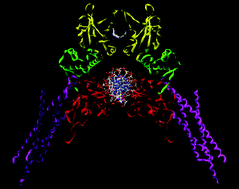Structure, function, and regulation of STAT proteins†
Abstract
The Signal Transducer and Activator of Transcription (STAT) family of proteins was first discovered in the 1990's as key proteins in cytokine signaling. Since then, the field has greatly advanced in the past 15 years, providing significant insight into the structure, function, and regulation of STATs. STATs are latent cytoplasmic transcription factors consisting of seven mammalian members. They are Tyr phosphorylated upon activation, a post-translational modification critical for dimerization, nuclear import, DNA binding, and transcriptional activation. In recent years, unphosphorylated STATs have also been observed to dimerize and drive transcription, albeit by yet an obscure mechanism. In addition, the function of cytoplasmic STATs is beginning to emerge. Here, we describe the structure, function, and regulation of both unphosphorylated and phosphorylated STATs. STAT isoforms from alternative splicing or proteolytic processing, and post-translational modifications affecting STAT activities are also discussed.


 Please wait while we load your content...
Please wait while we load your content...